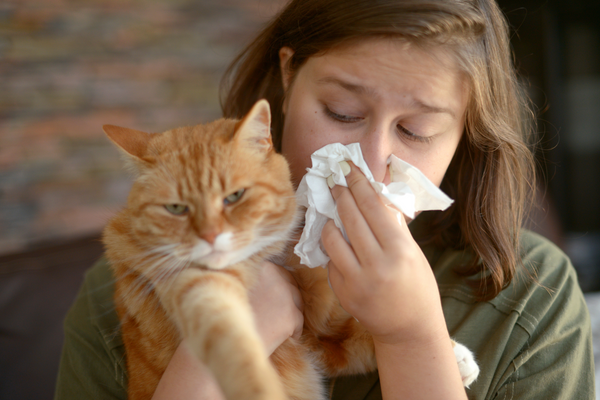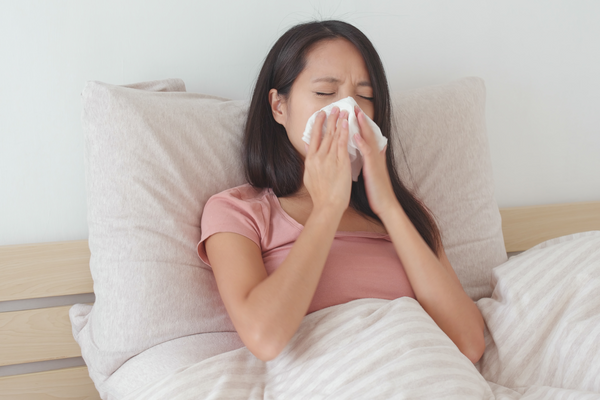Spring Cleaning: The Pillow Guide

Can you remember the last time you washed your bed pillows? Since you rest your head on them every night, you want to make sure that they are as clean and germ-free as possible. Dirt, dust, dust mites (and their fecal matter), saliva, sweat, skin cells, body oil, bacteria, and even mold or mildew can accumulate inside pillows over time, causing unpleasant odors, aggravating allergy symptoms, and breaking down their support. And while you should launder your pillowcases on a weekly basis while you’re washing your sheets, bed pillows themselves should be washed at least twice a year to help them last longer and keep the allergen and germ-load down. People who live in warm, damp climates should wash their pillows more frequently to keep them fresh, sanitary, and comfortable for sleeping. But not all types of pillows – down, fiberfill, and foam – should be cared for in the same way.
Many types of pillows are machine washable, some advise only spot-cleaning, and others are dry-clean only. The care tag on your pillow is the best place to start, but no need to worry if you can’t find it. Follow our step-by-step guide to freshen up your pillows – no matter the size, shape, or fill – just in time for spring.
Materials Needed
- Anti-Allergen Laundry Detergent
- Vital Oxide
- DustMiteX
- Wool dryer balls
- Microfiber cleaning cloths
- Pillow protectors
How to Clean Down & Fiberfill Pillows in the Washing Machine
Luckily, most down and fiberfill pillows are machine washable, which means that you can simply toss them into the washing machine to clean them. It’s important to wash two pillows at a time to keep your washer balanced, which will keep your washer from bouncing about and ensuring an all-around clean. Front-loading or top-loading washing machines without an agitator (the large spindle found commonly inside the middle of a top-load washer) are best suited for washing pillows, but if an agitator-style washer is your only option, place pillows vertically inside the washer to lessen the chance of them getting damaged by the agitator.

When washing your pillows, it’s important to avoid fragranced detergents as they can damage the material, and, worse, leave behind a noxious chemical residue that you will breathe in as you sleep. Instead, opt for a gentle, fragrance-free, hypoallergenic detergent like our plant and mineral-based Anti-Allergen Laundry Detergent. It will clean your pillows and remove dirt, dust mite allergens, mold, mildew, pet dander, unpleasant odors, and stains without leaving anything behind.
Before you begin washing, you should always read the care label on your pillows and follow the directions accordingly. However, if you can’t find the instructions, use this as your guide:
- Remove protective covers and pillowcases, and put pillows into the washing machine, two at a time. For front-loading and top-loading washers without an agitator, position pillows horizontally. For machines with agitators, place pillows vertically. Take care to not overload the machine as pillows need plenty of water to get clean.
- Select the gentle cycle and use a warm water setting. Add on an extra cold water rinse and spin cycle to squeeze out as much dampness as possible.
- Add fragrance-free detergent, such as our Anti-Allergen Laundry Detergent, along with ½ cup of Vital Oxide to sanitize.
- Tumble the pillows dry on low heat, fluffing and turning them every 20 to 30 minutes. To make them even fluffier, dry pillows with a few wool dryer balls. Keep in mind that pillows take longer than a normal load of clothes to dry, so it’s important to keep an eye on them and not forget them in the dryer! You’ll want to make sure they’re completely dry within 12 hours to keep mold or mildew from growing.
- Remove pillows from the dryer and ensure that they’re completely dry before putting your protective covers and pillowcases back on.
How to Clean Memory Foam & Latex Pillows
Unfortunately, you can't put your memory foam or latex pillows straight in the washing machine. While foam and latex pillows resist dust mites because they're made of material that is simply too dense for the mites to penetrate, it’s still important to clean them on a regular basis since dust mites, saliva, and other ick can accumulate on the pillow surface.
As always, you should check the washing instructions on the pillow's tag, or follow our pillow cleaning method outlined here:
- Remove pillow protectors and pillowcases and wash according to the care tag. If you cut off the care tag, stick the cases and covers in the washing machine, select the normal or casual cycle, and use hot water. Add detergent and ½ cup to 1 cup of Vital Oxide, depending on the size of the load.
- Thoroughly vacuum both sides of your pillows to remove dirt and dust.
- Prepare a bucket of warm water. Dip a microfiber cloth into the bucket, wring out excess water, and then spray the cloth with Vital Oxide. Thoroughly wipe down the pillow, being careful to not completely saturate it, refreshing the cloth with clean water and Vital Oxide as you clean to deodorize and de-germ. Let air dry. Turning your A/C down and using fans will help to speed up the drying process.
- Lightly mist pillows with DustMiteX to eliminate dust mites and dust mite allergens.
- Allow pillows to air dry completely before replacing covers and putting back onto the bed.
Recognize When it’s Time to Replace Your Pillows
Cleaning your pillows on a regular basis can prolong their life, but alas, there is a limit to how long your pillows can properly support you. Experts agree that the rule of thumb for replacing pillows is every one to two years, although some will last longer. The foolproof way to know when to replace bed pillows: Fold them in half. When you let go, if they pop back to normal, keep them. If they stay folded, it's time to invest in new pillows.
Have questions about cleaning, disinfecting, or reducing allergens? We have answers! The Ecology Works has been helping people with allergies and asthma since 1993. We can help you select the products you need to live a better, allergen-free life. Please feel free to Contact Us or message us on Facebook. No question is too small! We’re here to help.




